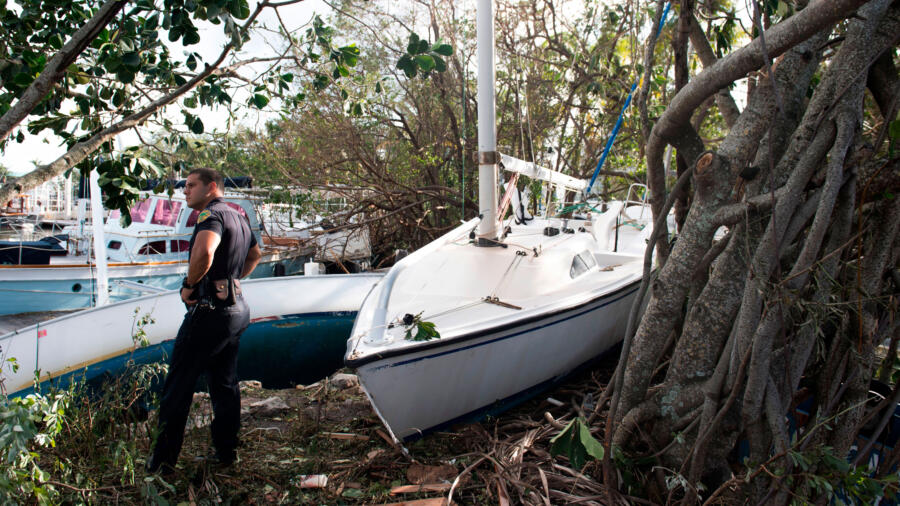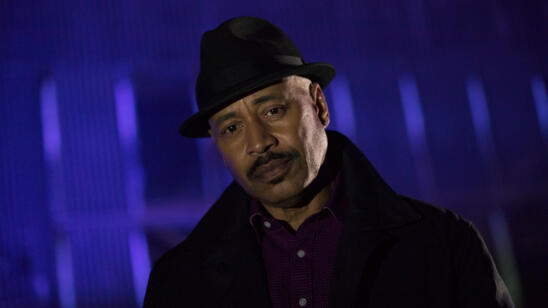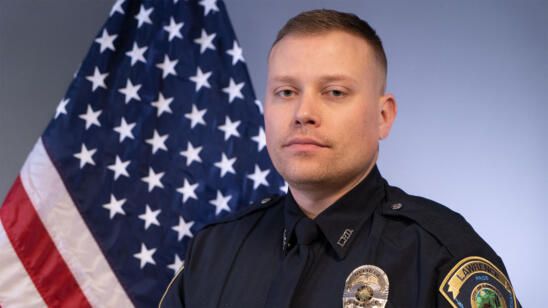Hurricanes cause havoc with more than just their wind speeds and storm surges—often, it’s the ensuing chaos among people on the ground that can pose a threat. In addition to widely reported property crimes that often follow a hurricane, the World Health Organization reports that rape, child abuse and other forms of violence go up in the immediate aftermath of a major storm.
In the wake of major hurricanes that have ravaged Texas, Florida and many parts of the Caribbean, including most recently, Puerto Rico, we reached out to retired Miami-Dade Police Major Rey Valdes to share his experience policing in the aftermath of Hurricane Andrew, a Category 5 storm that devastated South Florida in 1992.
As told to reporter Adam Janos.
I was in the far-left lane when I saw him hijacking her car in the far right, one hand pulling at her hair as he waved a semiautomatic pistol in her face. I was only five or six cars behind him. I don’t know how he didn’t see me.
This was on US-1, just north of the Florida Keys. This poor woman was seat-belted in, and he couldn’t pull her out. Eventually, though, he forced her from the vehicle.
Only problem was that he—like everybody else—was now stuck in bumper-to-bumper traffic. I got out of my car, drew down on him and made the arrest.
It was mid-September—three or four weeks after the storm.
I’d been a detective investigating fraud and forgery, but when Andrew hit I was told to cut my hair and ponytail and start working patrol. Nonviolent crime had to take a back seat.
I was working in deep-south Dade County: Homestead, Florida City, unincorporated Miami-Dade. One thousand square miles of land with no power, no traffic lights. [After the hurricane,] landmarks I’d grown used to were shells of what they’d been—Burger King’s corporate headquarters on Biscayne Bay flooded to 16 feet.
It was pitch black every night. Surreal, like a bomb had gone off. I’d work 6:00 p.m. to 7:00 a.m., Tuesday through Sunday. After 9 o’clock, there were only three kinds of people out: the military, the police and the people trying to cause problems.
Our commander—Major Frank Boni—had all the officers put on their red and blue flashers at night. That way, wherever people looked, they always saw those red-and-blue lights. We had to give the people a sense of security. Of course you’re going to investigate violent crime, but the immediate responsibilities were for things as mundane as traffic lights. You needed traffic to flow.
There was no water for months.
A lot of people were really on edge. We used to get a lot of calls of signal 34, which is a disturbance or an argument, between people and their insurance adjusters. Sometimes they were arguing, sometimes they had gone to fisticuffs. People would grab two-by-fours, fence posts. This was a daily occurrence.
We had several suicides. The one that bothered me the most was the 16-year-old boy.
It was a middle-class African American family. Mom and pop, grandpa and two kids. Kid was a decent student. There were no drug issues, no abuse.
He’d hung himself from a tree in the backyard, using the nylon rope that people had been using to fasten rain tarps onto roofs.
I asked [the boy’s father], ‘Was your son upset about anything recently?’ He said he couldn’t say. He worked for Florida Power & Light and, as such, had been out working hard each day. He’d barely been home.
The police weren’t 100 percent there either. A lot of them just went AWOL. They’d drive their families up to Tennessee or somewhere [to get away from the disaster area].
I used to leave for work real early. One day I saw a fellow officer shaving in the back of his car in the parking lot by work, wearing uniform pants and a white tee shirt. He had two black garbage bags with him. I said, ‘What’s with the garbage bags?’ He said, ‘Rey, that’s what I have. One bag is my clean clothes. The other bag is my dirty clothes.’ His life was compartmentalized into the trunk of a Crown Victoria.
Others were aggressive. With the curfew, there were some officers who would harass the crap out of people. We had checkpoints at every major intersection. I’m not going to say it was martial law…but it was damn close.
But you’ve got to give people a break. I remember one day, a few weeks after the storm, when a couple of guys tried to steal some water from a delivery truck that was unloading behind the Walgreen’s. They were two middle-aged guys with no criminal history. It was a typical September afternoon in Miami, which is to say hot, muggy and miserable.
Some store employees called the cops, and there was a cop ready to make the arrest. I managed to talk him out of it.
You can’t be so strict sometimes. Sometimes you need to go into the grey area, and not be a cop, but instead be another human being.
A+E Networks proudly supports Team Rubicon, a veterans-based disaster relief organization currently working on several missions in hurricane-affected areas.
Click here to learn more and support Team Rubicon.
Related Features:
Good Cop, Bad Cop: A Retired Detective on the Best and Worst Cops He Knows
How Police Chaplains Help First Responders During (and After) Tragedies


